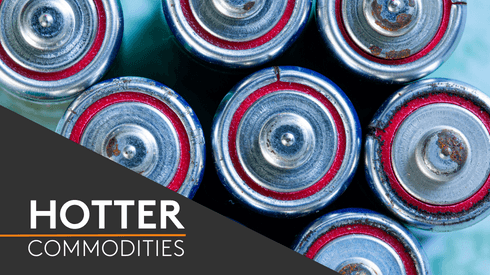Copper mining majors have once again begun to size up greenfield and brownfield opportunities, hoping to be in prime positions with red metal prices on the rise.
But the return of capex budgets, deferred and cut since the copper price crashed in 2015, may not come quick enough to avert a deficit for mined copper, industry executives and analysts said ahead of the conference in Santiago.
“The rolling copper deficit, which was always three years away for much of the past five years, is appearing fast on the horizon,” analysts Colin Hamilton and Kash Kamal of BMO Capital Markets, a major lender to North American mining firms, said in a research note last week.
The London Metal Exchange’s three-month copper contract stood at $6,769 per tonne at the 5pm Ring close on April 6, having reached a five-year high of $7,312 per tonne in late December last year.
But the legacy of the 2015 crash, when the LME copper price dropped by 25% over the course of the year, culminating in a seven-year low of $4,318 per tonne on January 15, 2016, means boardrooms are still hesitant to sign off on major projects.
“The pain of 2012 and 2016 was so very, very great on mining company finances,” Juan Carlos Guajardo, founder and executive director of Chilean mining consultancy Plusmining, said.
“It makes it very difficult to justify big spending and will take more time to leave the pain behind,” he added.
$3 per lb, is it enough?
Mining companies traditionally refer to a $3-per-lb copper ($6,614 per tonne) price as a floor to spur new investment, but with prices so volatile since 2015, many are inclined to wait before committing expenditure.
“I don’t think there’s enough certainty on the price for people to make a commitment and until you see that for a bit, the more projects will be delayed,” a copper mining executive who declined to be named said ahead of the week’s events.
“I think we’re just under the incentive price, people are looking for $3.25-3.50-per-lb copper,” he added.
Mining costs in the form of labor contracts have also risen – notably in Chile, where labor unions have so far secured gains in wages and bonus payments in the collective bargaining agreements reached this year.
“The issues of having to sink a lot more money into the ground to bring a tonne of copper out are still there,” Bank of America Merrill Lynch Head of Metals Research Michael Widmer said.
“When you have ore bodies declining anyway and you’re facing higher labor costs it doesn’t make it any easier,” Widmer added.
Indeed Chilean legislators signed laws last year that ensured mining companies are not able to offer reduced wage terms to workers when negotiating those deals, ensuring higher labor costs are essentially fixed for miners present and future.
Some signoff
Some new developments have been given the go-ahead: last week Teck Resources increased its stake in Compañía Minera Teck Quebrada Blanca SA, bringing closer the Quebrada Blanca Phase 2 project, while Antofagasta has committed $1.1 billion to expand production at its Los Pelambres mine.
These projects should bring forward capacity, but are currently the exception to the norm.
“Currently, the copper pipeline is the lowest, both in terms of number and capacity of projects, seen thus far this century,” the BMO analysts said.
Deficit should trigger M&A
Exploration has been ongoing and finally after several years in the wilderness private equity and mining majors are starting again to look at exploration being made by junior miners.
“Two years ago juniors were the ugliest guys at the party, nobody wants to dance… but now things are changing,” Jose Silva of Chilean explorer Sociedad Minera El Aguila said.
“The juniors are starting to come back, but the money isn’t there. The investment community is still hesitant when it comes to mining,” Guajardo said.
And an incoming mined copper deficit should fuel mergers and acquisitions (M&A) in the copper market long shorn of major deals, with major players positioning themselves to make the most out of an ill-supplied market.
“This situation, where you have a lack of organic growth and a deficit market means companies will have to go out and buy assets or companies,” Guajardo said.





